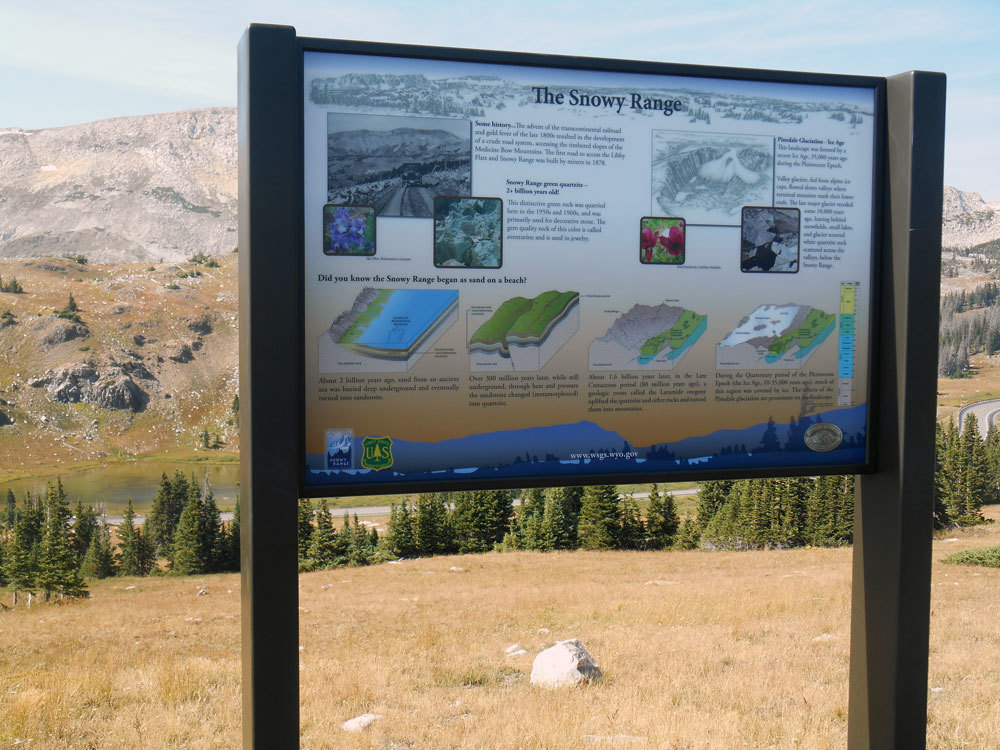NEWS RELEASE: New Geologic Signage Installed Off Snowy Range Scenic Byway
Wyoming State Geological Survey sent this bulletin at 09/03/2015 10:54 AM MDT |
|
Having trouble viewing this email? View it as a Web page. |
Sept. 3, 2015
******FOR IMMEDIATE RELEASE******
Media Contact:
Chamois Andersen
(307) 766-2286 x231
chamois.andersen@wyo.gov

New Geologic Signage Installed Off Snowy Range Scenic Byway
The public now has the opportunity to learn about the geology of the Medicine Bow Mountains while driving along the Snowy Range Scenic Byway in Albany County, Wyoming. Two new interpretive signs were recently designed by the Wyoming State Geological Survey (WSGS) and installed at prominent lookout points along the byway, thanks to a cooperative effort between the agency and the Medicine Bow-Routt National Forests.
“These signs represent an important part of our efforts to make geology more relevant to the public,” says Tom Drean, director of the WSGS. “They provide visitors with the opportunity to learn about the geologic forces behind the amazing landscape they see while traveling through the area.” Both signs were strategically placed to include expansive views of the Medicine Bow Mountains and the Snowy Range.
One sign is located at Libby Flats (off Hwy 30) and covers the geologic mountain building events that led to the creation of the Medicine Bow Mountains. It also explains the geologic age of the rocks covering the landscape, from Precambrian rocks as old as 2.5 billion years to more recent rocks of Quaternary age (as young as 1.5 million years).
The second sign is located at the Medicine Bow Overlook, just west of Libby Flats. It tells the story about how the Snowy Range formed, while looking at this massive formation. “Many people ask about the type of rock that makes up the Snowy Range. Understandably, they figure it’s granite, but it’s really quartzite,” says Mary Sanderson, recreation planner for the Laramie Ranger District.
As this sign illustrates, the rocks comprising the Snowy Range began as sand – about 2 billion years ago – from an ancient sea. After the sand was buried, it eventually turned into sandstone. More than 300 million years later, through heat and pressure, it changed or metamorphosed into quartzite. Then, about 1.6 billion years later, in the late Cretaceous period (70 - 80 million years ago), a major mountain building event called the “Laramide orogeny” uplifted the quartzite and other rocks. With many years of erosion, the metamorphosed quartzite is the Snowy Range we see today.
“These signs will be really helpful for visitors to gain knowledge about the Earth processes that created this landscape. We also hope the information will inspire people of all ages to learn about geology,” Drean says.
This project was made possible through a grant by the Wyoming Office of Travel and Tourism.
###
You are subscribed to All News Releases for Wyoming State Geological Survey. This information has recently been updated, and is now available.

